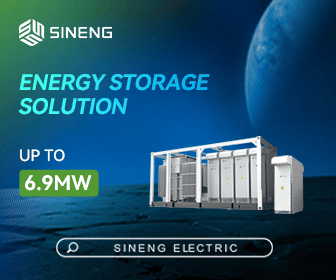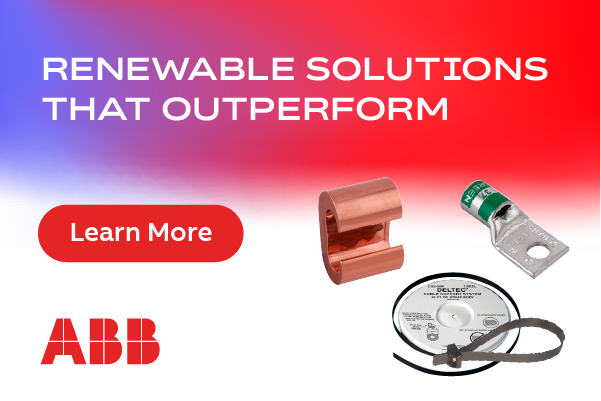Hurricane-Proof Energy Resiliency
 The damage from extreme weather in 2017 put energy resiliency at the forefront of national conversation. Many coastal and island communities who hoped their renewable energy assets would sustain them during and after last year's hurricanes, floods, and other disasters, quickly realized those assets didn't work when the grid was out. With danger of extreme weather on the rise - in its Global Risks Report 2018, the World Economic Forum gives weather events and natural disasters the top rankings - renewable energy needs a more robust integration to survive extreme weather events. Microgrids can provide that robust integration, and can augment renewables with other generation resources to provide hurricane-proof energy resiliency.
The damage from extreme weather in 2017 put energy resiliency at the forefront of national conversation. Many coastal and island communities who hoped their renewable energy assets would sustain them during and after last year's hurricanes, floods, and other disasters, quickly realized those assets didn't work when the grid was out. With danger of extreme weather on the rise - in its Global Risks Report 2018, the World Economic Forum gives weather events and natural disasters the top rankings - renewable energy needs a more robust integration to survive extreme weather events. Microgrids can provide that robust integration, and can augment renewables with other generation resources to provide hurricane-proof energy resiliency.
A microgrid integrates one or more energy resources - typically solar, wind, generators, flywheels, or batteries - into a resilient energy system, whereby any one or all the energy resources sustain the facility's loads. If any energy resource becomes unavailable in the microgrid (such as a roof-mounted PV array being damaged during a hurricane), a well-designed microgrid (with an advanced microgrid controller) will automatically adjust the generation to another resource, and continue to operate safely in "islanded" mode.
The key challenge for a hurricane-proof microgrid is sustaining safe and resilient operation during and after the hurricane. Successful microgrid implementations are made up of four capabilities:
- Minimizing the ability of the weather to destroy the energy assets or the energy distribution network;
- Having redundant energy assets that can operate if a primary energy asset is compromised;
- Designing safety protection schemes that isolate damaged energy assets;
- Utilizing an advanced microgrid controller that seamlessly controls and safely operates the microgrid.
 Minimizing a hurricane's ability to take out the distribution network is accomplished by burying the lines. Minimizing potential destruction to energy assets, however, especially renewable energy assets, is much more difficult and costly. While fortifying mounting structures can help resist wind loads during a hurricane, storms with the strength of a Category 4 or 5 remain very destructive. Installing energy assets inside buildings, or underground, helps shield them from the high wind loads; but this only works for non-renewable energy resources such as generators, batteries, or flywheels. Installed at ground level, these energy assets have sufficient mass to resist high wind forces, and can also be protected with hurricane rated-enclosures.
Minimizing a hurricane's ability to take out the distribution network is accomplished by burying the lines. Minimizing potential destruction to energy assets, however, especially renewable energy assets, is much more difficult and costly. While fortifying mounting structures can help resist wind loads during a hurricane, storms with the strength of a Category 4 or 5 remain very destructive. Installing energy assets inside buildings, or underground, helps shield them from the high wind loads; but this only works for non-renewable energy resources such as generators, batteries, or flywheels. Installed at ground level, these energy assets have sufficient mass to resist high wind forces, and can also be protected with hurricane rated-enclosures.
Utilizing redundant energy assets helps ensure energy resiliency in the microgrid. Island facilities typically have solar. Adding a backup generator provides redundant energy resiliency and an energy resource for night. Adding a battery or a flywheel further stacks the energy resiliency capabilities, and provides an uninterruptible power capability - as well as a capability for peak demand shaving, load shifting, or demand response during normal grid operational conditions. A microgrid will integrate all of these energy assets and optimize their operation to deliver energy resiliency, energy security and, lower overall energy costs.
Designing safety protection schemes in the microgrid is crucial for safe operation. If an energy asset goes offline, breakers can isolate it from the rest of the microgrid and keep it from compromising the microgrid's operability.
An advanced microgrid controller with real-time, distributed control capability is the best solution for islanded microgrid systems, especially those facing extreme weather conditions. Real-time control capability ensures the loads and generation are always in balance. If an energy resource goes offline, or loads change dynamically, the controller can instantly manage it and prevent overload, stalling or other power issues. The advanced controller also ensures a seamless transition between grid-tied and islanded modes. Once the facility is islanded, power factor and power quality issues are much more problematic, and the microgrid controller must adjust to it.
 Not all advanced microgrid controllers are alike- some have cloud-based controls and management systems that have latency. Control commands and resource status that go to the cloud and back or update infrequently are not able to balance load and generation in real time. Some advanced microgrid controllers are "hub and spoke," meaning a single controller manages the resources; if that controller is compromised during extreme weather, the entire microgrid goes down. For the most hurricane-proof capability, be sure to utilize an advanced microgrid controller with real-time, distributed control capability.
Not all advanced microgrid controllers are alike- some have cloud-based controls and management systems that have latency. Control commands and resource status that go to the cloud and back or update infrequently are not able to balance load and generation in real time. Some advanced microgrid controllers are "hub and spoke," meaning a single controller manages the resources; if that controller is compromised during extreme weather, the entire microgrid goes down. For the most hurricane-proof capability, be sure to utilize an advanced microgrid controller with real-time, distributed control capability.
Island and coastal communities can be much more resilient to extreme weather by utilizing microgrids. Whether a single building microgrid, or community microgrid, the added energy resiliency helps ensure communities sustain essential services, commerce and livelihood for its citizens during, and after the storm.
Lisa Laughner is President & CEO of Go Electric Inc., which develops customer side of the meter energy solutions that help facilities, communities, and military bases be energy resilient and sustainable.
Go Electric | www.goelectricinc.com









